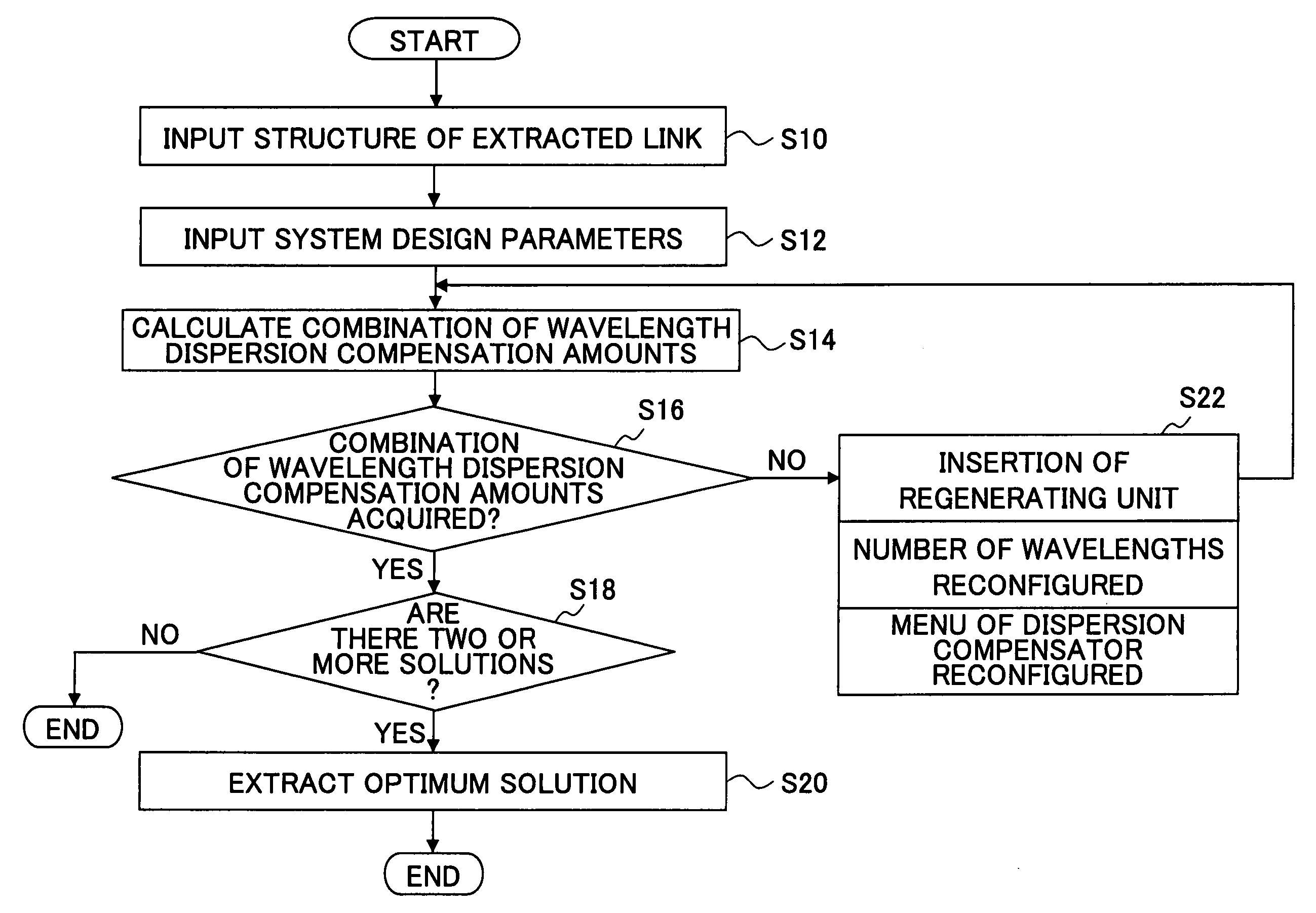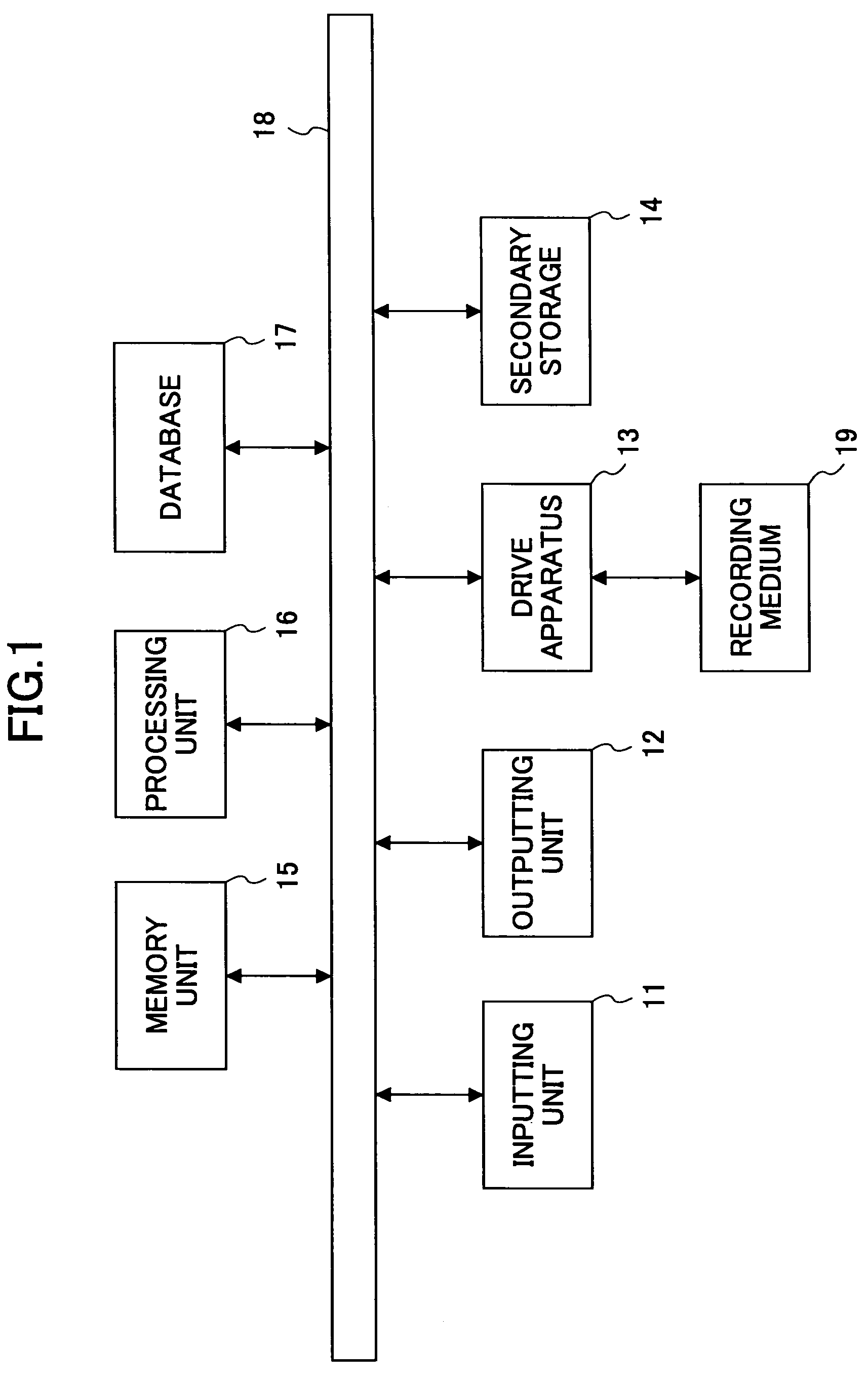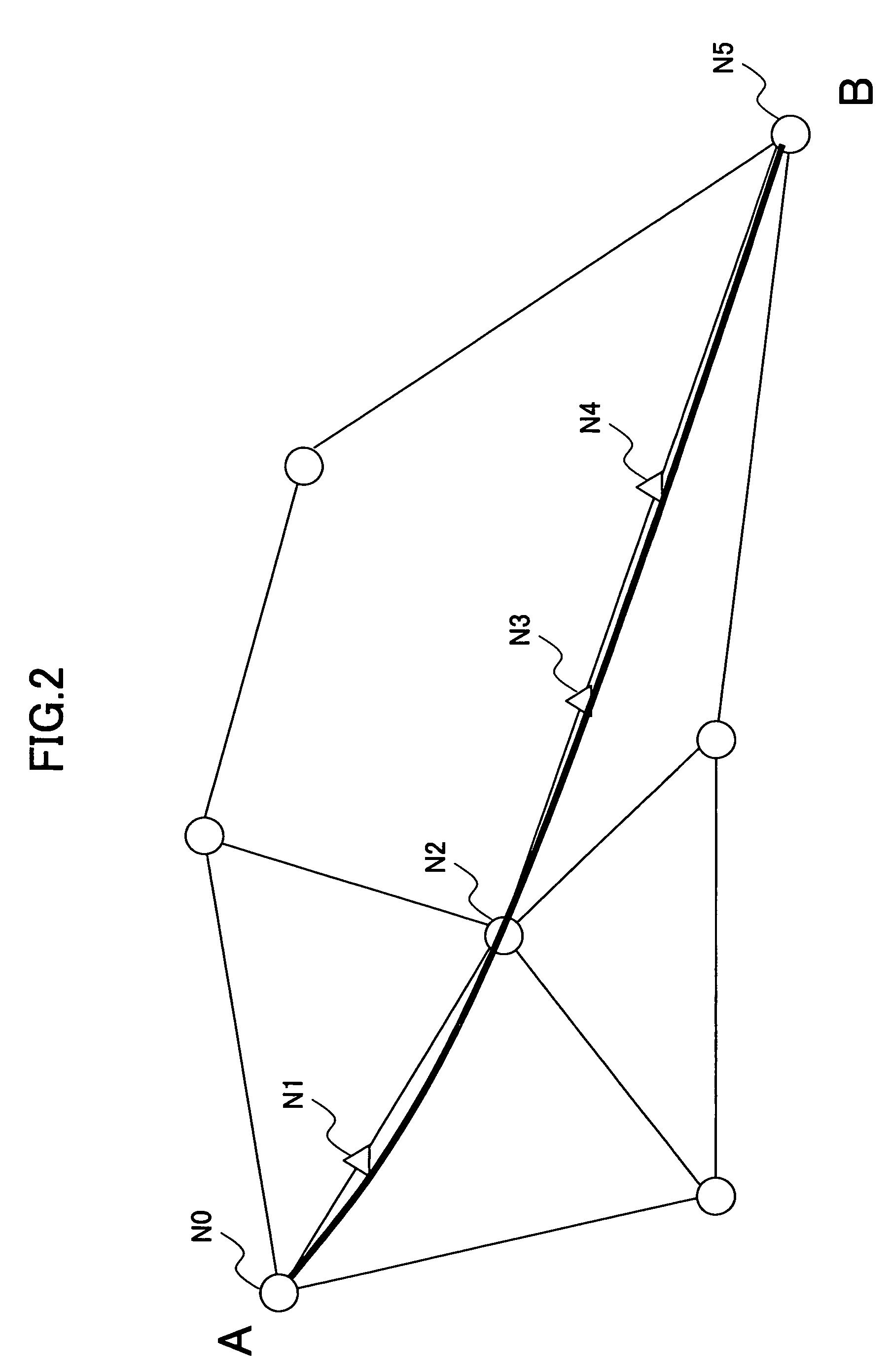Wavelength dispersion compensation design method and a system thereof
a design method and wavelength dispersion compensation technology, applied in the field of wavelength dispersion compensation design methods and systems, can solve the problems of difficult to design the network in a short period, the method of optimizing the amount of wavelength dispersion compensation for any desired point-to-point transmission system and metro system of a ring structure is not available in a commonly applicable and formulized manner, and achieves the effect of shortening the design tim
- Summary
- Abstract
- Description
- Claims
- Application Information
AI Technical Summary
Benefits of technology
Problems solved by technology
Method used
Image
Examples
first embodiment
[0062]Next, the first embodiment is described, wherein a wavelength dispersion compensation design is performed for a link that is extracted from an optical network as shown in FIG. 6. Here, the extracted link is from a node N10 (point A) to a node N13 (point B) as indicated by a thick line. The extracted link consists of three spans P11, P12, and P13 that connect the starting node N10 and the terminating node N13, and nodes N11 and N12 that are each equipped with OADM functions as shown in FIG. 7.
[0063]The spans P11 through P13 include wavelength dispersion compensators 221 through 223, respectively, and wavelength dispersion compensators 241 through 243, respectively. Here, the first wavelength dispersion compensators 221 through 223 are connected on the upper stream side of the corresponding spans, the latter ones being provided on the down stream side of the corresponding spans. Then, the total amount Dd(n) of wavelength dispersion compensation for each span is expressed as Dd(n...
second embodiment
[0095]Next, the second embodiment is described with reference to FIG. 11, which is a ring configuration system. The ring system includes four spans P21 through P24, and nodes N20 through N23 each having OADM functions. There is no regenerating unit among the nodes N20 through N23.
[0096]In this case, if the node N20, for example, serves as the starting node and the terminating node, Paths are conceived as shown in FIG. 12. Paths are extracted by making each node into the starting node and the terminating node, and Paths (1) through (13) are obtained as shown in FIG. 12. Here, Path (1) that starts at the node N20 and returns to the node N20 may be defined as not existing. In this case, the number of the Paths is 12, and 12 simultaneous inequalities are to be solved for obtaining the amounts of wavelength dispersion compensation of the spans.
[0097]Where “i” represents a node number, “s” represents the number of the spans, and “M” represents the number of spans to which a dispersion com...
third embodiment
[0099]Next, the third embodiment is described with reference to FIG. 13, which is another ring configuration system and is equipped with a regenerating unit. The ring system includes four spans P31 through P34, and three nodes N31 through N33 each have an OADM function, while the node N30 is a regenerating unit (Reg).
[0100]At this time, the node N30 is made into the starting node and the terminating node, and Paths are developed as shown in FIG. 14. As shown in FIG. 14, Paths (1) through (10) are extracted. Here, Path (1) starting at N30 and terminating at N30 can be defined as not existing. In this case, the number of Paths is nine, and nine simultaneous inequalities are to be solved to obtain the amounts of wavelength dispersion compensation of the spans.
[0101]Where “i” represents a node number, “s” represents the number of the spans, and “M” represents the number of spans to which a dispersion compensator is provided, concerning the formulas (1) and (2), the number of simultaneou...
PUM
 Login to View More
Login to View More Abstract
Description
Claims
Application Information
 Login to View More
Login to View More - R&D
- Intellectual Property
- Life Sciences
- Materials
- Tech Scout
- Unparalleled Data Quality
- Higher Quality Content
- 60% Fewer Hallucinations
Browse by: Latest US Patents, China's latest patents, Technical Efficacy Thesaurus, Application Domain, Technology Topic, Popular Technical Reports.
© 2025 PatSnap. All rights reserved.Legal|Privacy policy|Modern Slavery Act Transparency Statement|Sitemap|About US| Contact US: help@patsnap.com



